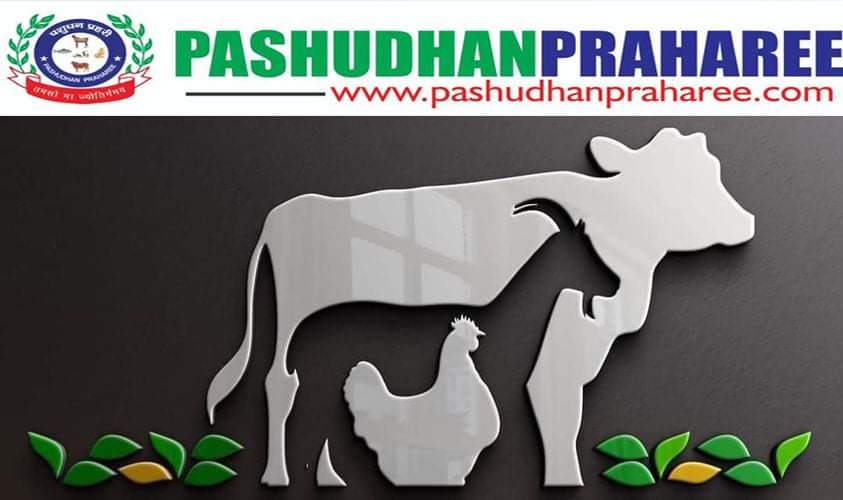Endometritis and Its Effect on Subsequent Reproductive Performance of Dairy Cows
Dr Ajay Patial 1, Dr Harshita Sood2, Dr Rohit Kumar3, Dr Susheel Kumar4
Introduction
A healthy endometrium is necessary for the nutrition of developing embryo, which leads to the successful establishment of pregnancy. Thus a healthy uterine environment is a key factor for excellent fertility in dairy animals, so any sort of insult to endometrium disrupts the normal reproductive functions leading to infertility. A major portion of the infertility in dairy cows can be attributed to endometritis. Endometritis is a localized inflammation of the endometrium (inner most layer of uterine wall)without any systemic sign and has a negative effect on the subsequent reproductive performance and milk productionof dairy cows. Bacteriological contamination of the uterus after parturition and metabolic changes during the transition period is the key factor for its occurrence.Endometritis is the most common cause of infertility in dairy cows because it delays uterine involution, prolongs the time to first estrus, increases the number of services per conception, and thus prolongs the inter-calving interval.Clinical endometritis is characterised by the presence of purulent (>50% pus) or mucopurulent (approximately 50% pus, 50% mucus) uterine exudate in the vagina, 21 days or more after parturition, and is not accompanied by systemic signs. Subclinical endometritis is characterized by inflammation of the endometrium that results in a significant reduction in reproductive performance in the absence of signs of clinical endometritis. Subclinical endometritis is defined by more than 18% neutrophils in uterine cytology samples collected 21-33 daysafter calving, or more than 10% neutrophils at 34-47 days.Antibiotic therapy, hormones, antiseptics and immune- modulators are the common approaches to handle the endometritis.
Cause
The causative organisms usually reach the uterus during coitus, unhygienic artificial inseminationand parturition. Abortion,dystocia, caesarean section, retention of placenta, mounting by infected bull, unhygienic practicesat artificialinsemination, hypocalcaemia, season and poor nutrition are the common factors associated with the development of endometritis. The most common bacteria involved in the development of endometritis are Arcanobacteriumpyogenes,Escherichia coli, Fusobacterium necrophorum and Prevotella species.Some other anaerobic bacteria like Fusobacterium necrophorum and Bacteroides spp.also have a role in the pathogenesis of endometritis.
Diagnosis
The main clinical sign of endometritis is presence of a cloudy or mucopurulent cervicovaginal discharge. On rectal examination uterine wall will be of doughy consistency.Histological examination ofendometrial biopsies is required for definitive diagnosis of endometritis. But this technique is time consuming, expensive and clinically not possible howeveruterine cytology is more practical and is required todiagnose subclinical endometritis. Uterine cytology samplescan be collected using one of the two techniques, cytobrushor the low-volume uterine lavage technique. However, neither of these procedures produces a rapid clinical diagnosis. Thus in the field conditions diagnoses of uterine disease usually depend on clinical examination. For diagnosis of clinical endometritis examination of the cervico-vaginal discharge for the presence of pus is a very useful method. White side test can also be done to diagnose the subclinical endometritis in field conditions.
Treatment
Rational therapy for the treatment of endometritis is based upon hormonal stimulation of uterine defence and use of antiseptics, antibiotics and immuno- modulators. Hormonal stimulation of uterine defence mainly involved the use of PGF2α in animals that have an active corpus luteum. Intrauterine infusions with various antiseptics such as lugol`iodine and povidone iodine are relatively common. Intrauterine route of antibiotics is generally preferred to treat endometritis. Cephapirin has been widely studied as an intrauterine treatment for endometritis with good results. Immuno-modulators like lipopolysaccharide of E.coli, Oyster glycogen and Leukotriene B4 can be used to treat the endometritis.
Conclusion
Endometritis is the most common cause of infertility in dairy cows because it delays uterine involution, prolongs the time to first estrus, increases the number of services per conception, and thus prolongs the inter-calving interval. It has a negative effect on the subsequent reproductive performance and milk productionof dairy cows. However it can be treated by the use of hormone, intrauterine infusions of antiseptics, antibiotics and immuno-modulators.


